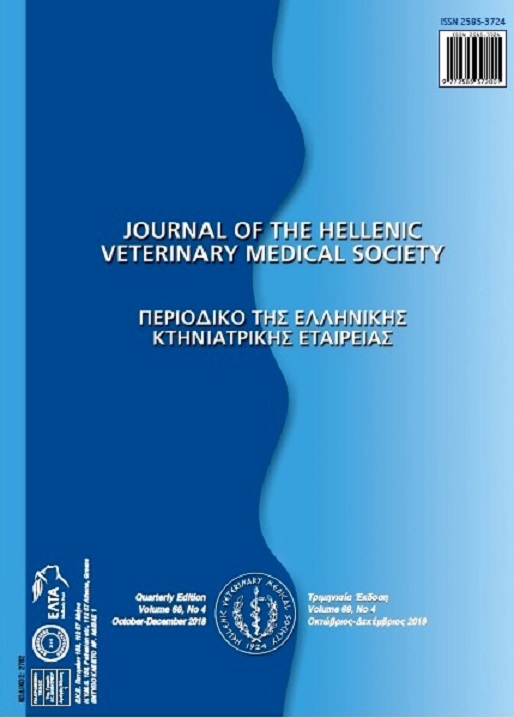Effects of GnRH or hCG on day 11 after artificial insemination in cows luteal activity
Abstract
In order to optimize luteal function by human chorionic gonadotrophin (hCG) or gonadotrophin releasing hormone (GnRH) on day 11 after artificial insemination (AI). 33 cows synchronized by the Ovsynch and divided into 3 groups according to the type of treatment: 1) hCG (1500 IU, n=11); 2) GnRH (100 µg, n=11); and 3) control (2 mL of saline, n=11). Blood samples were collected from all animals every 3 days from day 5 to day 23 to determine progesterone concentration. Ultrasonography was used to monitor the luteal surface structures at the time of blood sample collection. An accessory corpus luteum (CL) formed in 63.63% of cows treated with GnRH and with hCG, resulting in an increase in the total luteal tissue area compared with the controls. Thus, the volume of the principal CL was increased by hCG but tended to be similar to GnRH compared with the controls. Additionally, compared with the control group, hCG-treated and GnRH-treated cows had increased progesterone concentrations (p<0.0001). Among the hCG-treated cows, their progesterone concentration increased compared with GnRH-treated cows.
Article Details
- Zitationsvorschlag
-
Besbaci, M. M., Abdelli, A., Belabdi, I., Benabdelaziz, A., Khelili, R., Mebarki, M., & Kaidi, R. (2019). Effects of GnRH or hCG on day 11 after artificial insemination in cows luteal activity. Journal of the Hellenic Veterinary Medical Society, 69(4), 1227–1234. https://doi.org/10.12681/jhvms.16128
- Ausgabe
- Bd. 69 Nr. 4 (2018)
- Rubrik
- Research Articles

Dieses Werk steht unter der Lizenz Creative Commons Namensnennung - Nicht-kommerziell 4.0 International.
Authors who publish with this journal agree to the following terms:
· Authors retain copyright and grant the journal right of first publication with the work simultaneously licensed under a Creative Commons Attribution Non-Commercial License that allows others to share the work with an acknowledgement of the work's authorship and initial publication in this journal.
· Authors are able to enter into separate, additional contractual arrangements for the non-exclusive distribution of the journal's published version of the work (e.g. post it to an institutional repository or publish it in a book), with an acknowledgement of its initial publication in this journal.
· Authors are permitted and encouraged to post their work online (preferably in institutional repositories or on their website) prior to and during the submission process, as it can lead to productive exchanges, as well as earlier and greater citation of published work.



